Exploring the World of Sedum nussbaumerianum
Sedum nussbaumerianum, is a plant that combines the allure of easy care with striking beauty. Commonly known as Coppertone Stonecrop, this succulent is a treasure in the realms of gardening and houseplant aficionados.
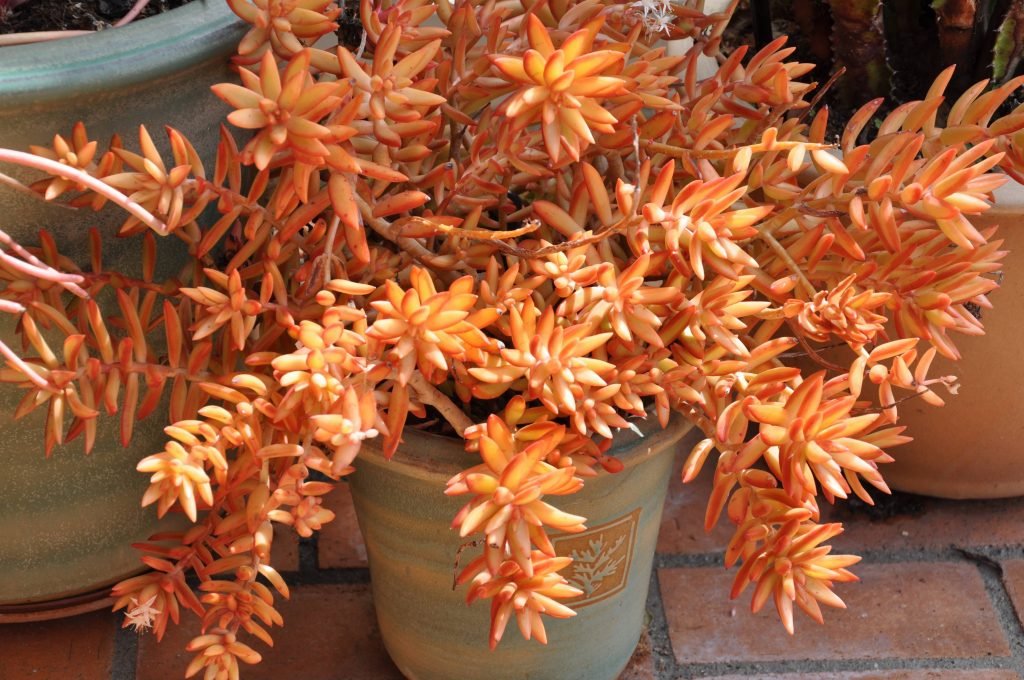
Plant Overview: Delving Into Coppertone Stonecrop
Discovering the Beauty of This Sun-Loving Plant
Originating from Mexico and belonging to the diverse Crassulaceae family, this striking succulent is celebrated for its foliage, which displays a remarkable coppery-orange hue when exposed to adequate sunlight.
🌞 Color Transformation Marvel: The ability of this plant to change from green to a vivid copper-orange in sunlight is its most captivating feature, drawing the interest of enthusiasts.
🌱 Growth and Adaptability: This plant demonstrates low and wide-spreading growth, forming attractive clusters that fit well into various settings, from the rugged beauty of rock landscapes to the refined look of container arrangements.
💐 Floral Attraction: Blooming in late winter or early spring, it produces white or light pink star-shaped flowers. These blooms not only add visual appeal but also attract a range of pollinators, enhancing the ecological balance of their surroundings.
More than just a typical plant, this succulent is a dynamic and adaptable addition to both outdoor and indoor environments. Its blend of ease of care and striking aesthetic appeal has made it a popular choice among enthusiasts of all levels.
Sedum nussbaumerianum Varieties
Sedum nussbaumerianum, widely celebrated for its easy-care nature and striking looks, comes in an array of captivating varieties. Each version of this beloved “Coppertone Stonecrop” brings a unique element to indoor plant collections.
1. ‘Coppertone’
🌿 Key Characteristics: The ‘Coppertone’ variety is named for its rich, coppery-orange leaves. This variant truly comes to life under full sunlight, where its colors become more vibrant and intense.
🌞 Ideal Sunlight: It thrives in full sun, making it perfect for those sunny spots either in your garden or a well-lit room indoors.
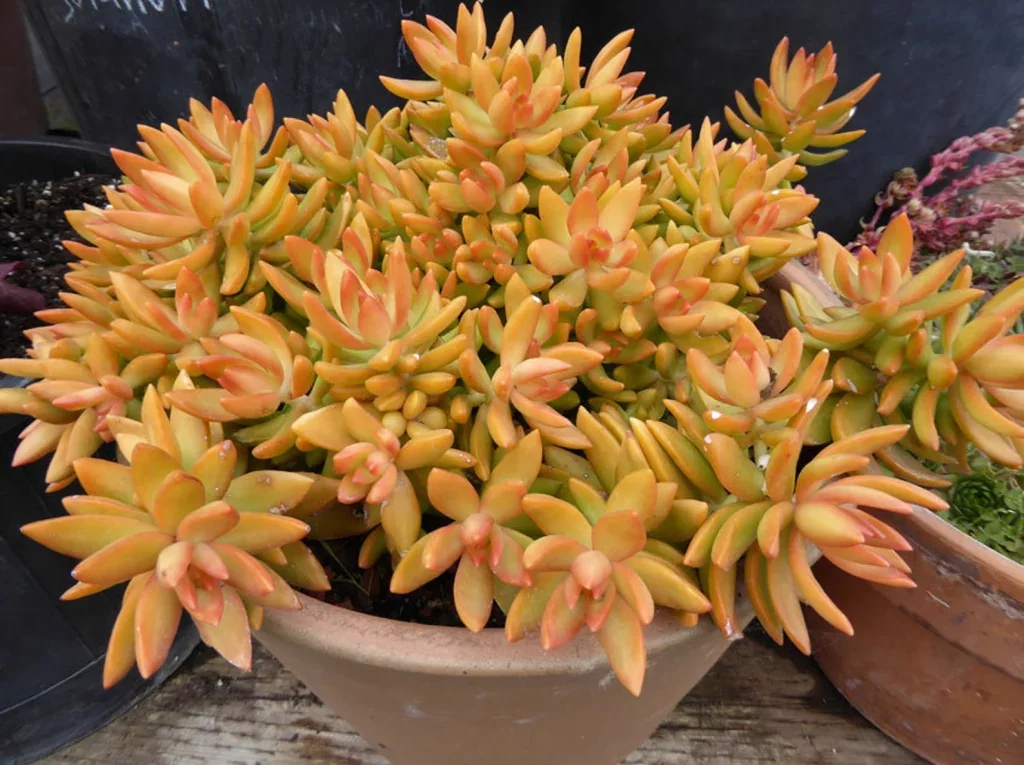
2. ‘Gold Mound’
🌿 Color and Form: Moving on, ‘Gold Mound’ displays golden-yellow leaves, offering a softer and more delicate texture. The leaves are smaller, adding to its subtle charm.
🌤️ Adaptability to Light: This variety is quite adaptable, thriving in both full sun and partial shade, thus offering versatility for various garden settings or indoor spaces.
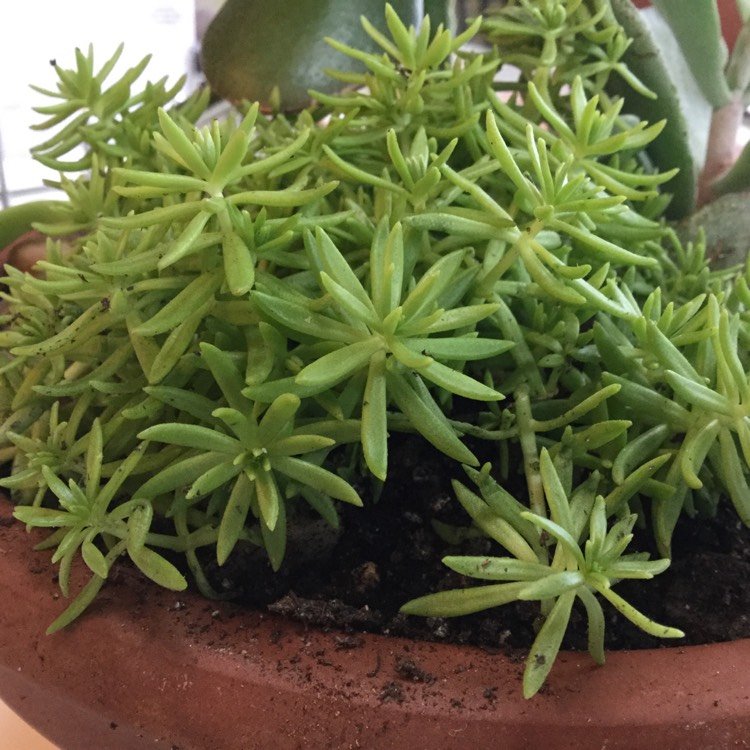
3. ‘Lime Gold’
🌿 Unique Coloration: The ‘Lime Gold’ variety stands out with its lighter, lime-green leaves, bringing a vibrant and fresh aesthetic to your collection.
🌱 Compact Growth: It grows more densely, making it an excellent choice for smaller gardens or as part of a mixed succulent arrangement.
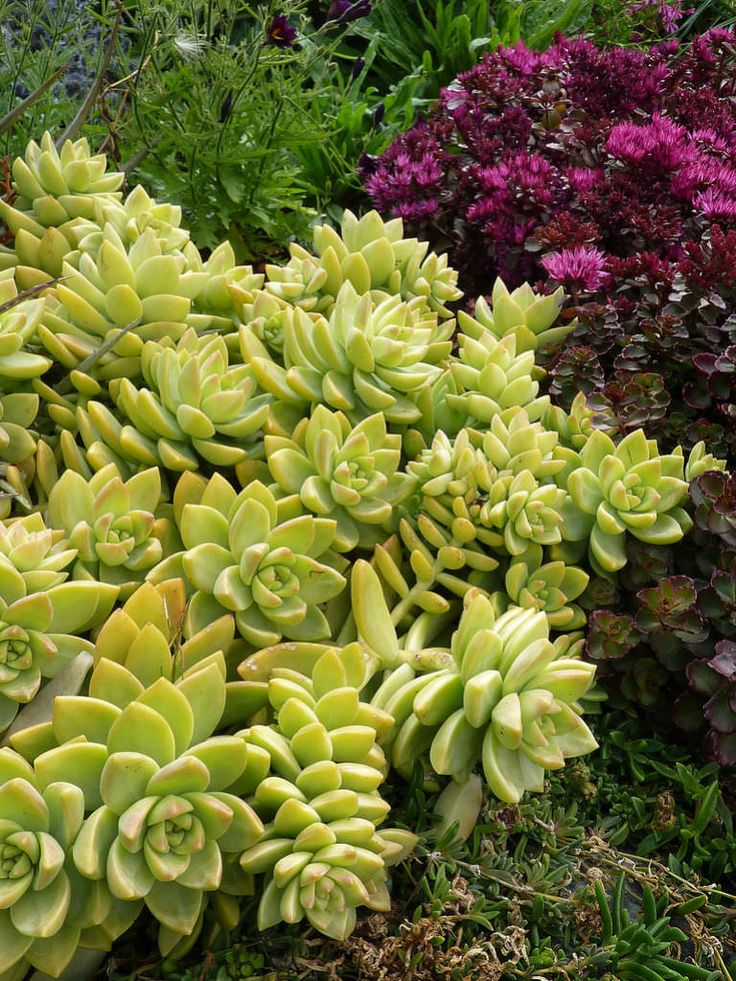
4. ‘Firestorm’
🔥 Striking Red-Orange Leaves: The ‘Firestorm’ variety is particularly eye-catching with its deep red and orange hues. This patented variety is notable for its unique and intense color.
🌞 Sunlight Needs: To maintain its rich, fiery colors, ‘Firestorm’ requires a good amount of sunlight, ideal for a spot that receives plenty of rays.
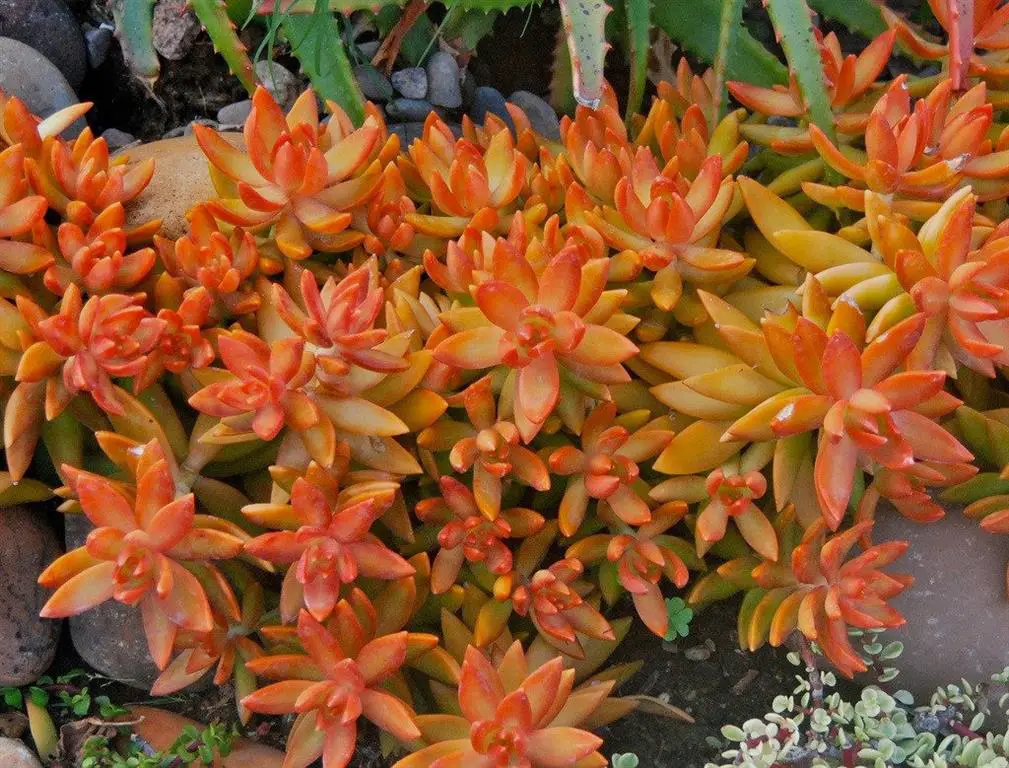
5. ‘Tangerine’
🍊 Vibrant Orange Shades: Last but not least, ‘Tangerine’ features deep orange leaves, robust in both color and growth.
🌤️ Flexible Sun Exposure: This variety is happy in both full sun and partial shade, giving you more options for placement.
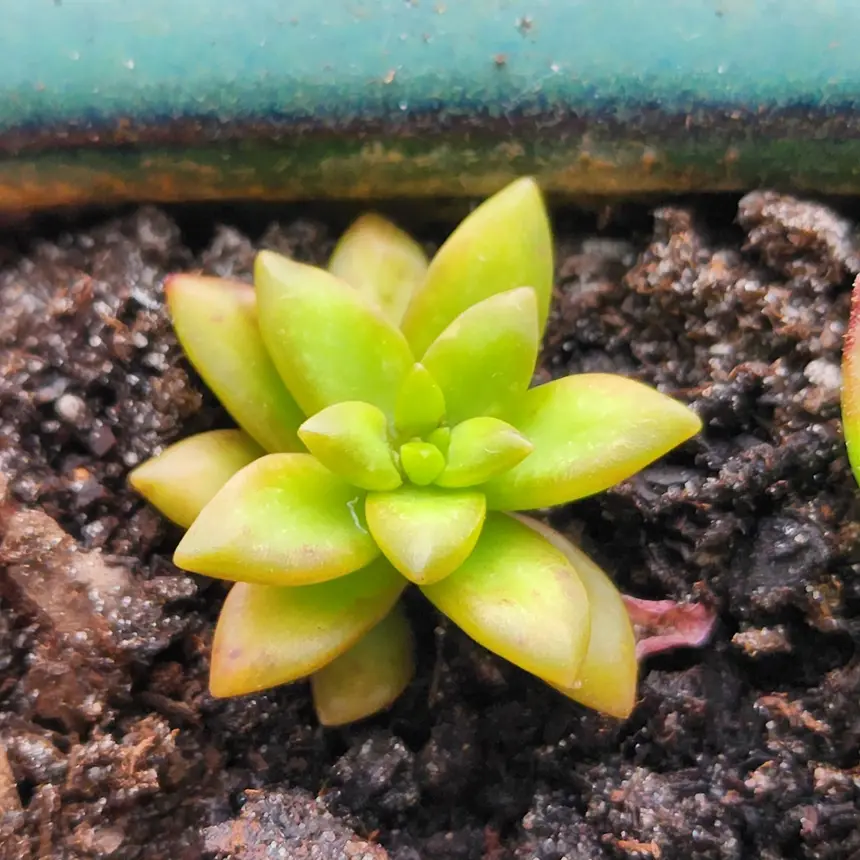
Each variety of Sedum nussbaumerianum offers something special. From the deep orange of ‘Coppertone’ to the softer yellow of ‘Gold Mound’, and from the fiery ‘Firestorm’™ to the lively ‘Lime Gold’, gardeners and plant enthusiasts have a plethora of choices.
When choosing a Sedum variety, think about your space’s lighting and the color theme you aim to create. Each variant, with its distinct colors and growth patterns, presents exciting opportunities for garden design and interior decoration.
Sedum nussbaumerianum “Coppertone Stonecrop” – Care Guide
Maximizing Sun Exposure for This Succulent
🌞 Embracing Sunlight: This plant revels in bright, direct sunlight, a critical factor in developing its unique coppery-orange leaf coloration. Aim to provide at least 6 hours of sunlight each day for optimal growth.
🌤️ Indoor Lighting Tips: When kept indoors, positioning the plant near a south-facing window is ideal to ensure it receives ample light. If you notice any fading in leaf color, it might indicate the need for more sunlight.
Watering: Finding the Right Balance
💧 Efficient Watering Practices: Like other succulents, this plant benefits from the ‘soak and dry’ watering method. Thoroughly water the plant, then allow the soil to completely dry out before the next watering. This method mimics the natural arid conditions the plant thrives in.
🚫 Avoiding Water-Related Issues: Overwatering can lead to problems such as root rot. Ensure good drainage in the pot and always check soil moisture before adding more water. Remember, it’s more drought-resistant than water-loving.
Soil Requirements: Laying a Strong Foundation
🌱 Optimal Soil Mix: For healthy growth, a well-draining soil mix is essential. Utilize a commercial cactus or succulent mix, or create your own blend with regular potting soil, coarse sand, and perlite or pumice.
🔍 Soil Maintenance: Regularly check to ensure the soil hasn’t become compacted, which could impede drainage. Refreshing the soil periodically helps maintain the right conditions for growth.
Temperature and Humidity: Creating a Suitable Environment
🌡️ Warmth Is Key: This succulent prefers warmer temperatures, ideally within the range of 65°F to 70°F (18°C – 21°C). It can adapt to higher temperatures, particularly when acclimated properly.
❄️ Cold Weather Caution: It is not frost-tolerant, so be wary of temperatures dropping below 50°F (10°C). In cooler climates, consider growing it in containers for easy relocation indoors during cold seasons.
💨 Humidity Adaptability: It is quite adaptable to various humidity levels. Typical indoor humidity conditions are generally adequate, adding to its versatility as an indoor plant.
Fertilizing: Encouraging Robust Growth
🌼 Seasonal Feeding: During its active growing seasons in spring and summer, feeding the plant with a diluted, balanced liquid fertilizer monthly can promote healthier growth and more vibrant foliage.
🚫 Avoid Excess Fertilizer: Be mindful not to overdo the fertilization, as this can be detrimental. During its dormant phase in fall and winter, hold back on fertilizing.
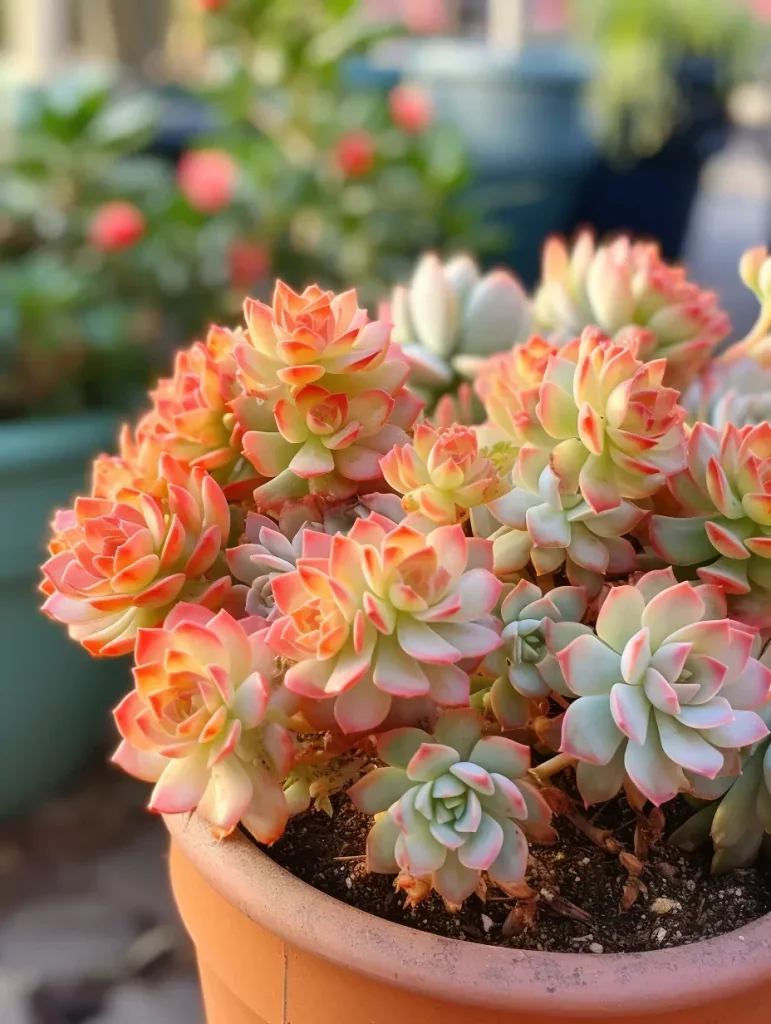
Growing Guide for Sedum nussbaumerianum: Cultivating Coppertone Sedum
Propagation Methods
Expanding your collection of this unique succulent is both rewarding and straightforward.
Starting with Leaf Cuttings
🌱 The Technique: For leaf propagation, gently twist a leaf from the stem, ensuring a clean break. This provides an ideal surface for rooting.
🌞 Caring for the Cutting: Place the leaf on well-draining soil, keeping it in a spot with bright, indirect light. Water sparingly until you notice root development.
Propagating from Stem Cuttings
🌿 Preparing the Stem: Select a healthy stem for cutting, using a sterilized knife or scissors. A length of a few inches is typically sufficient.
🌤️ Root Development: Allow the cutting to dry and callous over a day or two before planting in well-draining soil. Water gently and sparingly initially.
Division: Expanding Your Plant Collection
👥 Optimal Time for Division: The best opportunity for dividing the plant is during repotting, especially when you notice multiple stems or rosettes.
🌱 Dividing Technique: Carefully separate the sections, ensuring each has its own root system. Plant these divisions in individual pots with the right soil mix.
Potting and Repotting Practices
Regular potting and repotting are crucial for maintaining the health of your plant.
Choosing the Appropriate Pot
🌼 Importance of Drainage: Select pots with good drainage to prevent water retention. Terracotta pots are often recommended due to their breathability.
📏 Sizing Considerations: The new pot should be marginally larger than the root ball to avoid excess moisture retention, which could lead to root rot.
Repotting Steps
🌱 Procedure: The ideal time to repot is during the active growing period in spring or early summer. Remove the plant gently, clean the roots, and inspect for rot.
🌿 Soil Refresh: Plant in a new pot with fresh, well-draining soil, keeping the plant at the same depth as it was previously.
Pruning for Health and Aesthetics
Pruning is vital to maintain the desired shape and health of the plant.
Reasons to Prune
✂️ Growth Promotion: Pruning encourages new, bushier growth.
🌿 Health Maintenance: Regularly remove any dead or decaying leaves to keep the plant healthy and visually appealing.
Pruning Methods
🔍 Technique: Use clean scissors or shears to prune the top of the plant or any elongated stems, encouraging branching.
🌱 Aftercare: Allow the plant some time to recover post-pruning before resuming regular watering to prevent stress and potential infection.
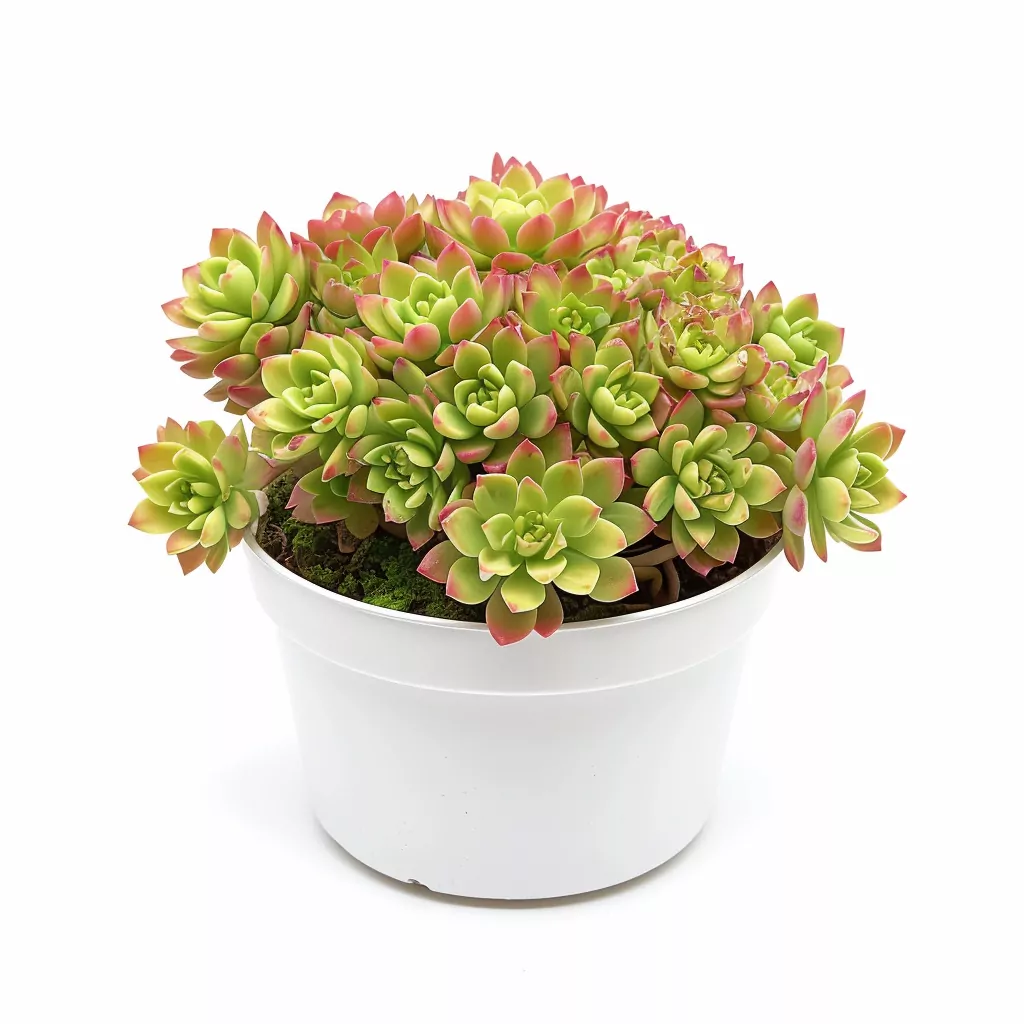
Managing Pests and Diseases in Sedum nussbaumerianum
Tackling Common Pests in Succulents
Despite its resilient nature, this succulent can occasionally be affected by garden pests. Early identification and management are essential for keeping your plant healthy.
Battling Mealybugs and Aphids
🐛 Identifying the Pests: Mealybugs present as small, white, cottony clusters, often found in leaf joints. Aphids, either green or black, are typically seen on new growth or the undersides of leaves.
🌱 Effective Control: Dislodging these pests with a strong water jet can be effective. For more serious cases, apply insecticidal soap or neem oil, ensuring thorough coverage of the plant.
Counteracting Spider Mites
🕷️ Detecting Spider Mites: These minuscule pests are difficult to spot but look for fine webs or a dusty look on the foliage.
🍃 Eradication Approaches: Boosting humidity can deter spider mites, which prefer dry conditions. Persistent infestations may require miticide or neem oil treatments.
Addressing Plant Diseases
Though generally disease-resistant, certain conditions can lead to fungal and bacterial issues.
Preventing Root Rot
🚫 Causes: Overwatering, coupled with poor drainage, often leads to root rot.
🌵 Preventative Measures: Ensure the plant is in well-draining soil and a pot with good drainage. Watering should only occur when the soil is dry.
Combating Powdery Mildew
🍄 Spotting the Fungus: White, powdery patches on foliage are typical signs. This fungus is common in warm, dry climates with cool evenings.
💦 Treatment Methods: Improving air circulation can help. While fungicides are an option, they should be used sparingly. Regular plant inspection and cleaning are key preventive measures.
Overcoming Common Growth Issues
Even hardy plants like this succulent can encounter growth problems.
Addressing Leggy Growth
🌞 Causes and Solutions: Inadequate light can result in elongated, weak stems. Enhancing light exposure and gradually acclimating the plant to brighter conditions are effective solutions. Pruning may also promote bushier growth.
Restoring Lost Color
🎨 Causes of Color Fading: Diminished coloration can be due to insufficient light or overwatering.
🌈 Reviving Vibrant Hues: Increase light exposure and adjust watering habits. Seasonal color variations are normal for this plant.
Dealing with Leaf Drop
🍂 Understanding the Issue: Sudden leaf loss can be triggered by environmental changes, like moving the plant or temperature shifts.
🌡️ Adaptation Strategy: Gradually acclimate the plant to new conditions, avoiding extreme changes in temperature, light, or watering routines.
By proactively managing pests, diseases, and common growth issues, you can maintain the health and vibrancy of your plant. Balancing proper care with timely intervention is key to nurturing a thriving plant in your garden or home.
Frequently Asked Questions
How do you care for potted Sedum?
Caring for this potted perennial succulent involves using well-drained soil in a pot with drainage holes. It flourishes in full sun to light shade. Ensure the soil dries out between watering to prevent overwatering. Prune and re-root stems if the plant becomes leggy. In hanging baskets or decorative containers, closely monitor moisture levels.
How hardy is this plant?
Known for its hardiness, especially in drought conditions, it’s suitable for rock gardens and as ground cover. This evergreen succulent thrives in well-drained soil but is not frost-tolerant and may be damaged below 28° F.
What are the benefits of Sedum plants?
Ideal for rock or succulent gardens, these low-growing plants make effective ground cover, adding colorful foliage from yellow-green to bright coppery red. In spring, they produce round clusters of white, slightly fragrant flowers. They’re also popular in hanging baskets and decorative containers.
Is this succulent good for dry, sunny areas?
Yes, this succulent is perfect for dry, sunny locations. It develops wide rosettes of yellow-green to orange, pointed leaves. Best grown in full sun, it exhibits vibrant foliage color.
Is this plant suitable as a ground cover?
Indeed, it’s excellent as ground cover. Its drought tolerance and low-growing, spreading nature make it ideal for rock gardens and dry, sunny borders. It provides year-round interest with its evergreen foliage and minimal water requirements.
What soil conditions favor Sedum?
Sedum prefers well-drained soil to prevent root rot. A succulent-specific mix with sand, perlite, and organic matter is ideal, offering the right moisture balance and nutrient mix.
Can this plant receive too much sunlight?
While it loves the sun, excessive exposure, especially in hot climates like Southern California, can be harmful. Light shade during peak sun hours is advisable to prevent leaf burn. Insufficient sunlight, however, may cause faded foliage and sparse growth.
Is Sedum burrito safe for pets?
Sedum burrito is generally non-toxic to dogs and cats. To avoid gastrointestinal issues caused by accidental ingestion, keep these succulents out of pets’ reach.
Introduction
Nicki Mann, based in Portland, Oregon, is a good writer and houseplant enthusiast. With her background in environmental science, Nicki specializes in indoor gardening, focusing on sustainable and organic practices.
Experience
Her interest in houseplants began in her mid-twenties, leading to a career writing articles about indoor plant care and eco-friendly gardening for various websites.
Education
Nicki holds a Bachelor of Science in Environmental Studies from the University of Oregon, which underpins her approach to indoor gardening. She continually enhances her knowledge through horticulture and environmental sustainability workshops.
Personal Life
Nicki, an avid nature lover, enjoys exploring the Pacific Northwest's trails. She's active in community gardening and lives with her two rescue cats, who share her interest in her growing collection of houseplants.


